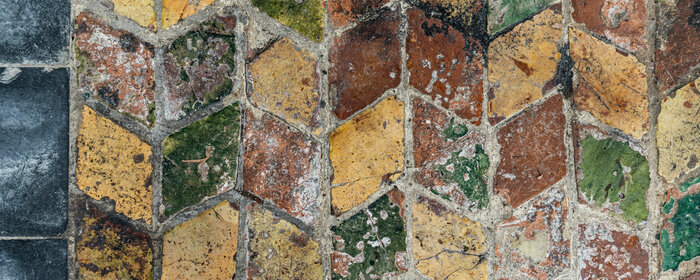

Gatehouse
The gatehouse of 1531 represented the most important link between the abbey and the world. At that time, it was the only building communicating with the outside world. The gatehouse is up till today the symbolic reference of the convent towards her environment.
Nowadays, the building is used for exhibitions, lectures and receptions.
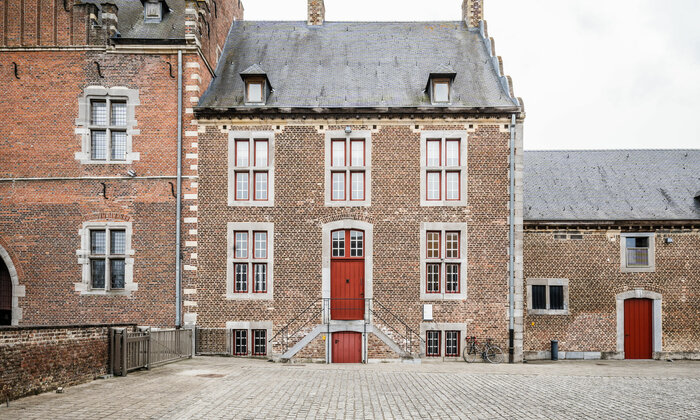
Lodge
The lodge leans against the gatehouse and used to be the home of the footmen and service staff. Nowadays, the administrative services of the Abbey site of Herkenrode are established here.
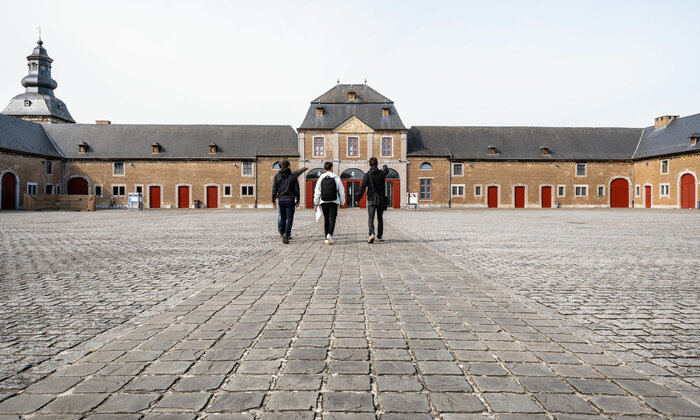
Stables West
The stables of the abbey farm with the elegant coach house are located on the three sides of the fowl yard and now accommodate a Visitors’ Center with shop, the Experience Centre and the entrance of the Herb and Inspiration Garden.
The Experience Centre offers the story of one of the first and richest women's abbeys in the Low Countries in an authentic historical setting. The story follows a chronological course through the fascinating history of 600 years of women at Herkenrode, for better or for worse.
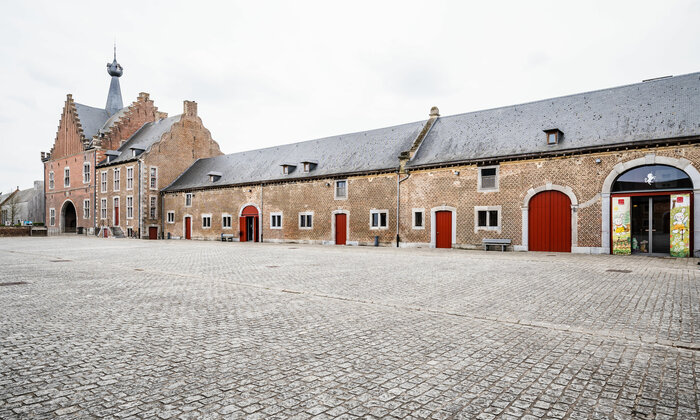
Stables South - Clavis concept store
The Clavis Concept store is established in the southern stables. As well as the Education Center of Willewete.

Tiendschuur (Tithes Barn)
In the monumental Tiendschuur of 1656, the ‘tithes’ taxes were stocked. The abbey had acquired the right to claim taxes on the annual harvest of crops and on cattle. The tiendschuur is now for rent for big events and parties.
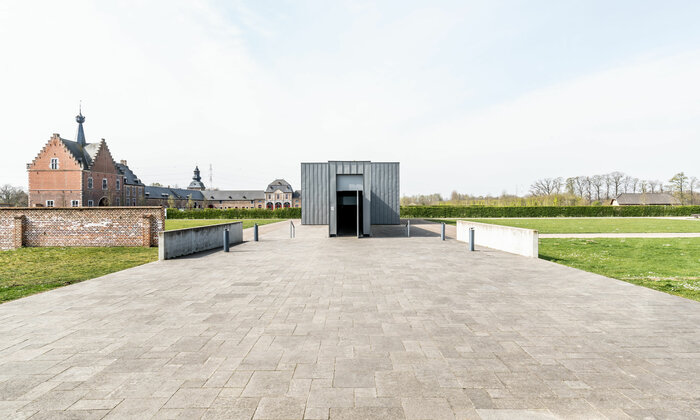
Historic heart
The archaeological remains of the historic heart of the site are hidden here. The church, the cloister and the sisters’ quarters were the spots where ‘ora et labora’, praying and working of the Cistercian sisters had occurred continuously for about 600 years.
The ‘lines’ of this historic heart have been made visible again with contemporary materials and on the spot where the abbey church used to be, the work of art 'The Quiet View’ of Hans Op the Beeck shines now. In this way, the spot regains a meaning of reflexion and introspection.
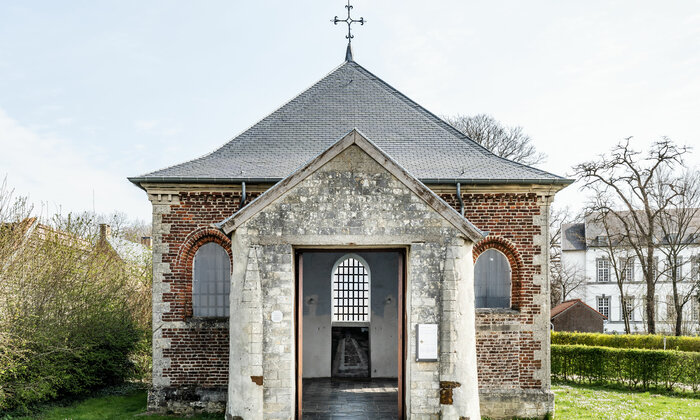
Sacrament’s Chapel
The Sacrament’s Chapel of 1661 behind the choir of the disappeared church used to be a sacristy with all the necessities for the Eucharist. Here, they also kept the oldest monstrance in the world with the Holy Miraculous Sacrament. The chapel is open to visitors from 10h - 17h.
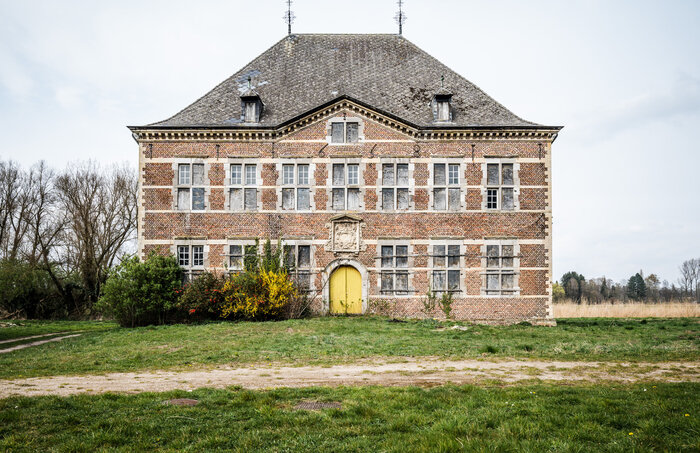
The Infirmary
In the infirmary, built in 1658, the sick sisters were cared for. The building was separated from the rest of the abbey by a moat. Next to the infirmary you will find the sister quarters built in 1519. The ruins of the half-timbered building and the building with the stepped gable are the silent witnesses of an important evolution. From praying, eating and sleeping together to an ever-increasing distinction between rich and poor in Herkenrode. In the sisters' quarters, the choir ladies were each given their own room with a garden.
Herita has started with the restoration file for the infirmary.
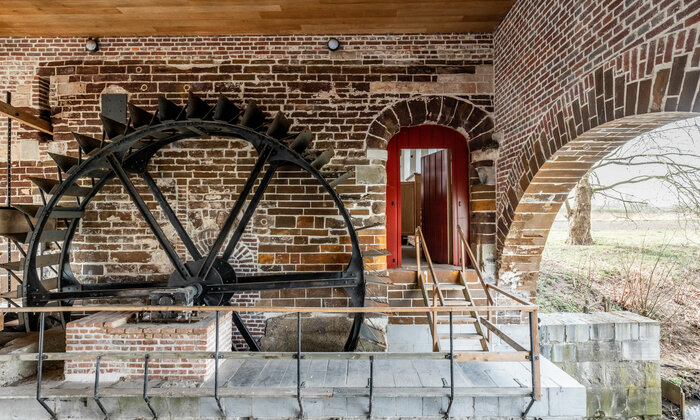
Abbey mill
As self-sufficiency used to be very important for the Cistercian sisters, the abbey had an extensive craft area with a water mill, a bakery, a tannery and several workshops with quarters for the service staff. The mill is open to visitors each third Sunday of the month.
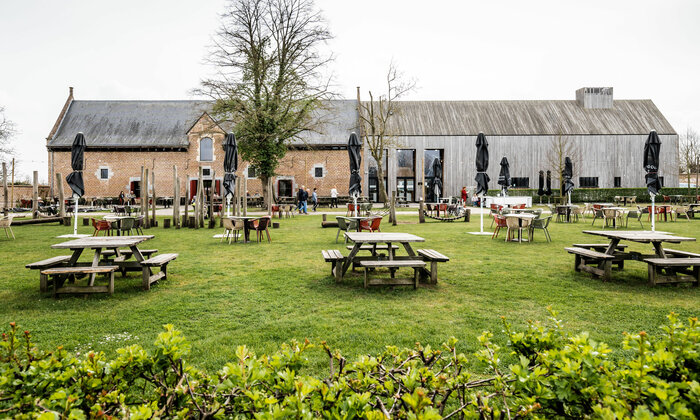
Horse stables
The horse stables were built under the reign of abbess Katharina the Lamboy (1653-1675). Then, they were located next to the driveway towards the abbess quarters. They took care of horses used to pull coaches.
Nowadays, it accommodates (including the new wooden building) the restaurant De Paardenstallen (the Horsestables).
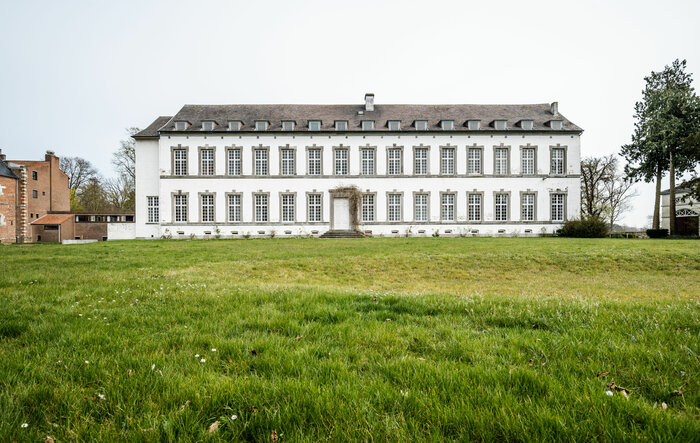
Convent
This zone with the former abbess quarters, the corresponding landscaped park and the infirmary were purchased in 1972 by the Canonesses Regular of the Holy Sepulchre. They built a new abbey with respect for the original architecture.

The English Park
The English Park is a unique green witness to a completely new view of the world and nature, which emerged between 1750 and 1850: all over Europe, lords of castles, abbesses and monarchs exchanged their austere formal gardens for lush landscape parks, with special tree species, vistas and footpaths. In the landscape you can still find traces of the formal "French" garden of the abbess with sleek lime avenues and two garden pavilions. The northern pavilion is still there, the southern one was converted into a romantic tower ruin in 1860, but disappeared at the end of the 20th century. At the back on the left is a "mout" or green lookout hill called "rabbit mountain" by the local residents, with a spiral path lined with yew.

The Monastery
After the French Revolution, it was not until 1972 that religious returned to Herkenrode: the Canonesses Regular of the Holy Sepulchre. They had a number of modern additions built. The last six sisters of this order moved to a residential care centre in Hasselt in 2022. Herita is now looking for a suitable use for the monastery buildings.

Tuiltermolen (Tuilter Mill)
Count Louis II of Loon gave this mill in 1213 to the abbey of Herkenrode. The inhabitants of Tuilt had to have their grain milled here.